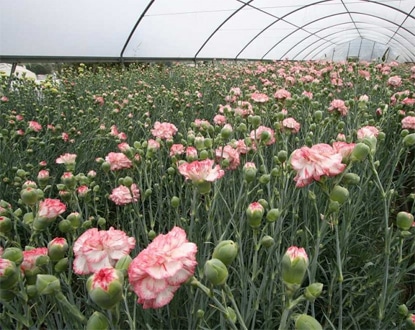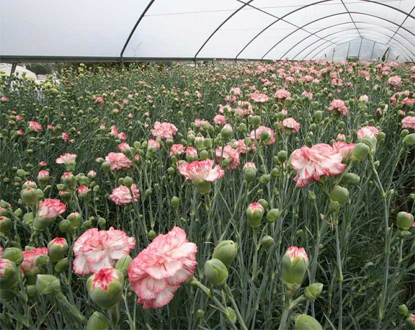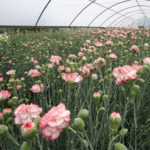There is much talk about the state of agriculture and food. Often without knowing much about it. Cultural, sometimes ideological, and in most cases, economic stakes influence the discussions and comments. The wide-angle view is, of course, global. But what is happening in our department? An assessment is necessary…

In 2007, the agricultural activity of the Alpes-Maritimes revolved around three major productions: flowers, fruits, and vegetables, which represent 82% of the agricultural wealth of the department, although these three activities occupy only 3% of the agricultural land.
Horticulture is the first economic pillar of the Alpes-Maritimes. This sector generates 44% of the agricultural wealth of the Alpes-Maritimes, before vegetables (22%) and fruits (16%). Four-fifths of floral revenues are assured by the production of flowers and potted plants or bedding plants.
It is evident that in a “sustainable development” perspective, the primary interest is in market gardening (vegetables and small fruits like tomatoes, strawberries…) and arboriculture (tree fruits).
Beginning with the arboriculture domain, olive-growing farms represent nearly 80% of the production.
Market gardening represents less than 300 hectares cultivated in the department. One hectare feeds approximately 40 families (2 adults – 2 children) per year. From this calculation, it is estimated that during this same period of food scarcity, only 48,000 out of more than one million residents of the Alpes Maritimes will have access to this production, consisting mainly of salads, zucchinis, chard, leeks, squash, carrots, cauliflowers, radishes.
It should be noted the total lack of cereal production, which should normally account for 60% of our daily food intake due to its nutritional contributions in essential proteins and vitamins.
Regarding livestock, sheep farming is the most common in the territory, with 260 farms and 70,000 heads. It is the most important agricultural activity in the mountainous area due to its specific geographical and climatic situation.
The main problem: excessive urbanization on fertile lands: 98% of the coastal area of the Alpes Maritimes is urbanized, making it clear that a National Interest Operation “Plaine du Var,” aiming to urbanize an additional 1% of this already heavily affected area in the name of sustainable development, is a paradox that only politicians and businessmen can understand.
For agriculture, the coastal area is the most prosperous, with fertile land allowing up to four annual rotations in market gardening, while the hinterland can only offer one.
Not to mention food autonomy, which seems entirely unachievable due to its land, geographical, and demographic situation, it is clear that we are in an extremely dangerous situation mid-term.
Due to the rising cost of energy, producing locally only 3% of what is consumed is madness. The transportation of goods will soon be more expensive than their production cost. This situation has not always been so sterile. In the 1970s, there were more than 10,000 farm operations in the department; about 650 have survived. To darken the local agriculture situation, the average age of farmers is 58, and few have a successor or buyer.
Until now, agricultural lands were easily converted into buildable zones, which was of significant interest for farmers who needed to sell their land capital due to their very modest retirement benefits. The territorial coherence schemes will allow preserving the last agricultural lands of the department.
This approach is essential for the future of local agriculture, but an injustice for all farmers who will not be able to achieve substantial retirement supplements at the end of their careers, while their predecessors have largely benefited from the situation.
Why should the advantages of some be paid by others? It is evident that the SCOT and the PLU being created will not take back space on urbanized lands and that the areas are extremely limited.
There is not much to expect from local development policies to improve the food situation in the department. At best, we could double or triple our market garden areas. This would obviously require much more noticeable citizen pressure on local politicians than currently exists. Fruit production also seems to be in a phase of decline.
Climate change plays a significant role in the eradication of fruit trees, according to farmers, and no plantation campaign has been conducted in recent years. It is worth knowing that it takes about 10 to 15 years for an avocado tree to become productive.
Let’s be positive; we have olive oil, salads, zucchinis, a few figs, and oranges, good meals in perspective, complemented by a dash of lemon juice…



